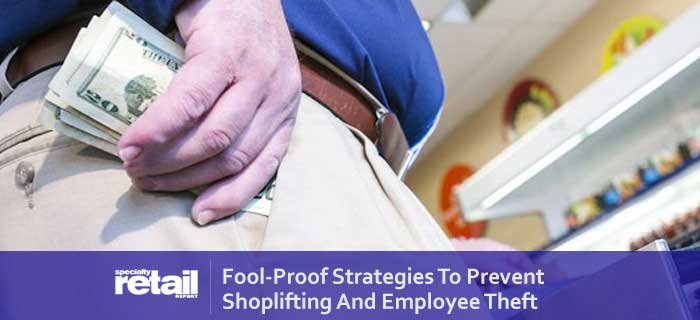Dr. Richard Hollinger of the University of Florida Department of Criminology, Law and Society joined hands with the National Retail Federation and ADT Security to conduct a detailed survey on retail-loss.
According to the results of a 2008 survey, retailers projected a loss of $35 billion in sales annually. Four major reasons that led to these losses included product damage, vendor fraud, shoplifting and employee theft. A major chunk of the losses was attributed to the last two reasons.
Shrinkage is a pressing concern for retail businesses across the globe. Vendor fraud, shoplifting incidents and employee theft all account for losses that leaves a dent in company’s profits.
These persistent challenges have a bigger impact than financial losses. It disrupts daily operations and destroys customer trust, leading to a higher surveillance in the stores.
Even though the amount of losses mentioned in the 2008 survey had decreased from the previous year; companies are planning to take protective measures and offering trainings to motivate employees. In an attempt to maintain profitability and protect against shoplifting, store employ prevention techniques that might create an uncomfortable situation for customers.
Every business owner believes that they have loyal employees TILL they start monitoring activity and transactions in detail. It is imperative to incorporate strategies that will handle employee theft issue to maximize profits.
Shoplifting is a complex issues that can be driven by a number of factors. Be it a lack of financial resources or an impulse, shoplifting can lead to huge losses for the company. Companies can adopt the following techniques to prevent it.
Hire or train your staff to catch shoplifters
Research suggests that training your employees to be alert and spotting a shoplifter is one of the easiest and most effective preventive measure. Well-trained staff will be aware of the signs that a shoplifter might present.
If you notice a customer avoiding eye contact, aimlessly wandering in the store, and looking for spots that are not visible to employees; chances are that there is a plan in motion.
Moreover, a shoplifter might enter and exit the store repeatedly. If an employee spots a customer presenting these signs, they should keep a vigilant eye on them. Immediately jumping to conclusion and accusing a customer will damage a store’s repute.
Invest in security equipment
To protect themselves against shoplifting incidents, retailers are investing in cutting-edge technologies to enhance their security systems. You can install surveillance cameras at strategic locations like exits, entrances and other blind spots.
It is crucial to keep your security cameras up-to-date and properly maintained. Hanging warning signs along with camera installation will act as a constant reminder, discouraging people from shoplifting.
Engaging with customer
Greeting customers at the door, offering assistance and creating a welcoming store environment will discourage shoplifters from acting on impulse.
Checking in on the customers will not only help your staff monitor their activity but it will result in friendlier service. Moreover, this techniques will aid employees to notice any lingering customers.
Design a Visible Store Layout
The layout of a store gives it a unique identity, which is why every store puts a lot of effort in planning a perfect layout and design. By using simple methods, you can easily optimize the store’s layout.
For starters, minimize blind spots and create open aisles to keep an eye on shoplifters. Secondly, place the checkout near entrance/exit so that employees can (silently) scrutinize each customer before leaving the store.
Smart Product Placement
Typically, shoplifters target small, highly priced items such as jewelry or a foldable dress. Arrange high-value or frequently stolen items near the cash registers or in highly visible areas. This makes it easier for employees to monitor those items and discourages shoplifters due to increased scrutiny.
If your staff member suspects shoplifting, it is best to contact security. You can also engage with the customer to and politely ask them, “Can I help you with something?” These measures will alert the shoplifter and will discourage them to steal.
Compared to shoplifting, a bigger threat to a company’s profits is employee theft. Various forms of theft includes vendor fraud, unauthorized discounts, or product theft. Read on to learn effective strategies that can deter internal theft.
Unannounced store visits
To keep a check on your employees, owners should visit the store at random times. These surprise visits will help an employer catch any suspicious activity and will keep the staff on their toes.
Publish an anonymous number
Nobody wants to be a tattletale. Having a phone number that employees can call on to tell on their co-workers will help avoid losses. When employees know that their co-workers are watching, they will avoid stealing cash or products.
Create a positive work environment
Fostering a positive work environment will promote employee satisfaction and lessen the likelihood of theft. When employers maintain open lines of communication, address concerns promptly, and reward employees for their hard work; employee stay loyal to the business.
Inventory management
With the latest technologies, employers can use advanced systems to automatically track inventory. In addition, employers can spot-check drawers or inventory during their visits.
To match the number of items available, store owners can use manual or POS systems to track inventory and conduct a physical check. When the management is aware of the store’s activity, employee theft does not go unnoticed.
Keep an eye on coupon usage
If your store offers promotions and coupons, it is crucial to take steps that will prevent it from being misused. Dissatisfied employees might favor their friends and family by offering a higher percentage of discount.
Additionally, you should also keep an eye on gift card sales. Catching discrepancies in the data is so easy, UNLESS it’s the holiday season.
By implementing these preventive measures, businesses can significantly reduce the risk of employee theft and shoplifting.

Patricia Norins is a strategic storyteller in the retail industry. With nearly 30 years of experience, she expertly combines innovative marketing strategies and industry knowledge to effectively convey brand stories. Coming from a fourth-generation retailer family, Patricia has a deep-rooted passion for retail real estate and has pioneered concepts such as adding retail to common areas and creating specialty leasing programs. In addition to her professional achievements, she actively mentors and contributes to the community, including co-teaching MBA classes.




